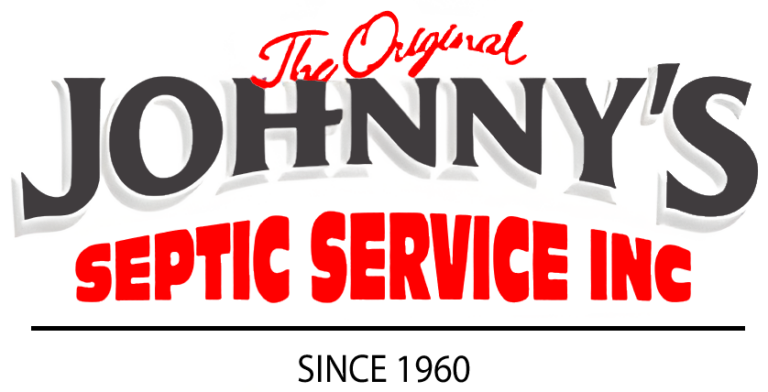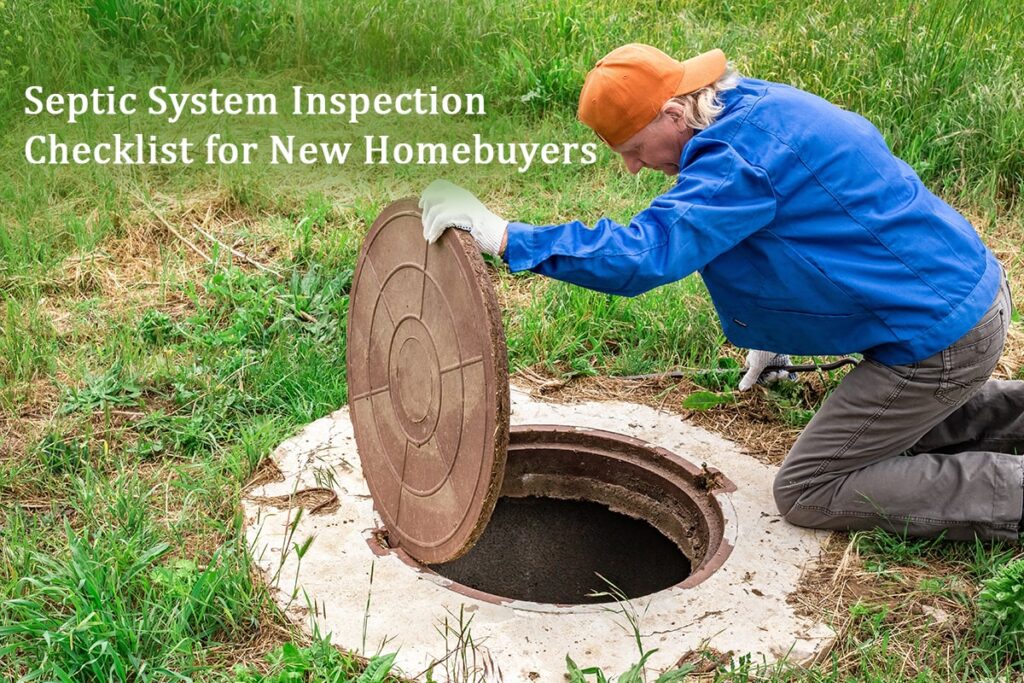A new home is one of life’s greatest investments, and ensuring that your septic system is in perfect condition is equally important. The septic system manages the wastes in homes that are not connected to a municipal sewer. If you do not inspect it properly, you could be in for expensive repairs, health hazards, or even system failure.
A septic tank inspection is important to avoid surprises and safeguard your investment, especially in Bellingham, Stanwood, Oak Harbor, and surrounding areas. This article by Johnny’s Septic Service Inc. offers a detailed checklist for new home buyers to confidently check the condition of their septic systems before purchasing.
Why a Septic System Inspection is Crucial
Essentially, every home without a connection to the public sewer system has some form of on-site septic system. To function properly, these systems must be properly maintained, primarily through inspection. Knowing the importance of these inspections can help a potential homeowner make an informed purchasing decision.
According to the leading septic system inspection contractors in Mount Vernon, a septic that has not been properly inspected and serviced will have numerous problems, including sewage backup, odors, and environmental contamination. Such problems lower your property’s value and endanger your family’s overall health and well-being. Furthermore, if problems are detected during the inspection, this could create a negotiation tool, leading to the possibility of getting repairs or a reduction in the price of the home.
Installing a septic system inspection before purchasing the home can avoid such surprises and save money. This general inspection can determine the system’s condition and locate any problems that will likely arise soon. From this information, you can decide whether to proceed with the acquisition, negotiate for repairs, or just walk away.
Pre-Inspection Checklist
Before the actual inspection process begins, you need to take several major steps to assist in it and record the information accurately.
1. Gather Existing Records
First, request any existing records related to the sewage system from the current homeowner. This would include past inspections of the septic system, maintenance records, a history of pump-outs performed, and the repairs and improvements that have been made. Leading septic system inspection and maintenance contractors in Oak Harbor reveal that these records give an account of the system’s history and allow the inspector to understand its present condition.
2. Choosing a Qualified Inspector
An inspection by the right inspector can ensure a septic system assessment is conducted thoroughly and accurately. A licensed, experienced inspector with knowledge of the kind installed in the home should be sought. A qualified inspector from a credible firm like Johnny’s Septic Service Inc., who knows specific local regulations and codes for areas such as Burlington or Mount Vernon, can help with nearby locations where special requirements may apply.
3. Scheduling the Inspection
Schedule the inspection when convenient for the inspector and the current homeowner. Top septic system inspection and maintenance contractors in Bellingham reveal that you must confirm that the inspector will have access to all parts of the property, including the septic tank and drain field and all associated system components. It is also important to have the test done during periods when the ground isn’t frozen because this can inhibit the inspector’s ability to evaluate the system effectively.
4. Understanding Local Regulations and Codes
These are subject to local regulations and codes, which vary in different locations. As such, it is good to be aware of the regulations in the region where the home is situated before performing the inspection. For example, if you purchase a home in Camano Island or Stanwood, you will want to know the requirements for septic system inspections there. Knowing that you have complied with all relevant inspection regulations will put you at peace.
5. Preparing Questions for the Inspector
Have a list of questions ready for the inspector before, during, and after the inspection. According to the top septic system inspection and maintenance technicians in Bellingham, these would include questions on the septic tank’s condition, age, probable years left in its service life, imminent concerns, and future maintenance recommendations. This will help you be more proactive in understanding the condition and any problems with the system.
The Septic System Inspection Checklist
Proper septic system inspection includes an in-depth examination of all system components. Your inspector will evaluate the condition of your system using a detailed checklist.
1. Look for Any Standing Water or Leaks
Standing water or leaks around the septic tank or drain field may indicate serious problems. Signs of water collection in the area, which suggest that the system is not draining properly, shall be checked.
2. Check for Signs of Damage or Wear
The inspector will look for any visible signs of damage or wear on the septic tank, pipes, and other system components. According to the leading septic system inspection contractors in Burlington, this will include checking for cracks, leaks, or other structural issues that may compromise the system’s integrity.
3. Tank Size and Capacity
The septic tank must be large enough and have the capacity based on the size of the home and the number of occupants. An inspector must verify that the tank size is appropriate for the household wastewater demands. A small tank could be regularly pumped out, but it poses a risk due to overflows.
4. Inspection of Tank Walls and Baffles
The inspector should look for any damage to the septic tank’s walls and baffles. Top septic system inspection technicians in Mount Vernon reveal that baffles are very important in preventing solids from entering the drain field, and any damage to them or other parts can cause huge problems.
5. Check for Sludge and Scum Levels
Sludge and scum levels in the septic tank are signs as to whether or not a pump-out is necessary. The inspector shall measure these levels and recommend whether a pump-out is necessary. Regular pumping is essential to avoid the buildup of solids that can eventually plug up the system.
6. Look for Signs of Drainage Issues or Saturation
According to the most popular septic system inspection and maintenance contractors in Camano Island, one of the septic system’s most important parts is the drain field, which disperses effluent into the surrounding soil. Therefore, the inspector will monitor the entire drain field for any indication of poor drainage or saturation of the soil. Saturated soil may mean a failing drain field, which is actually expensive to repair.
7. Checking for Proper Grading and Drainage
Proper grading of the area around the septic tank and drain field allows water to run off the system rather than puddling in it, which can lead to oversaturation and, ultimately, system failure. The inspector will evaluate the grading and make recommendations as necessary.
8. When Was the Last Pump-Out Performed?
Knowing when the septic tank was last pumped will help assess the maintenance schedule. Leading septic system specialists in Oak Harbor reveal that the inspector will review the record of these events to determine whether the tank is due for a pump-out and advise on proper requirements going forward.
9. Frequency of Maintenance
A properly working septic system requires regular maintenance. The inspector will assess the system’s maintenance record and then develop recommendations for further servicing. This may include the pumping frequency, whether helpers should be added, or other maintenance practices.
10. Flush Various Fixtures to Test System Response
The plumber inspector will flush toilets and run water through several fixtures in the home to see how the system reacts. Top septic system inspection experts in Sedro Woolley reveal that slow drainage, backups, or unusual noises could indicate blockages or other issues within the system.
11. Check for Any Unusual Odors or Slow Drainage
Foul odors or slow drainage are the most common early warning signs of septic system problems. The inspector will search around the septic tank, drain field, or inside the home for unusual odors that would indicate the system is malfunctioning
12. Documentation and Reporting
Finally, the inspector will write a report of all the findings, pointing out a detailed account of the septic system’s condition, the identified problems, and the recommended repairs; they will also give some valuable advice regarding its future maintenance. According to the top septic system inspection and maintenance experts in Stanwood, this can be a valuable resource as you make decisions about the property.
Post-Inspection Checklist
Once the inspection work is complete, some important steps must be taken depending on what the inspector has found.
1. Interpreting the Report
Take time to go through the septic system inspection report to determine its precise condition. According to the top septic system inspection and maintenance specialists in Stanwood, if any of the terms or issues sound unfamiliar, clarify with the inspector. Understanding the report is important to deciding whether to buy a home.
2. Negotiating Repairs or Replacements
Leading septic system maintenance experts in Bellingham, Arlington, and Oak Harbor reveal that if the inspection uncovers major problems with your septic system, you may have to negotiate with the seller for repairs or replacements. This can include requesting the seller address these issues before closing or reducing the purchase price to cover the cost of repairs.
3. Planning for Future Maintenance
According to the leading septic system inspection and maintenance contractors in Camano Island, some form of long-term maintenance planning is necessary to maximize the system’s life expectancy regardless of the system’s present state. Using the inspection results as a guide, prepare a record of periodic pump-outs, inspections, and other maintenance that should be done.
Common Issues Found During Inspections
According to the top septic system maintenance experts in Burlington, several common issues are frequently identified during septic system inspections. Understanding these potential problems can help you better assess the system’s condition and anticipate any future concerns.
1. Clogs and Blockages
The most common problems with septic systems involve clogs and blockages. Top septic tank system inspection and maintenance experts in Arlington reveal that these obstructions can develop in the pipes leading into the tank, tank, or drain field. If this blockage is not corrected in time, there will be backups, slow draining, and possibly a system failure.
2. System Overloads
According to the top septic system inspection technicians in Sedro Woolley, septic tanks are designed according to the projected volume of wastewater that results from the number of occupants in the household and the size of the home. Due to increased household size, generally due to more fixtures and high water usage, overloads cause frequent pump-outs, overflows, and damage to the drain field, increasing septic system repair costs.
3. Drain Field Failures
Leading septic tank system inspection and maintenance contractors in Camano Island reveal that the leach field is an integral part of any septic system since it allows for the discharge of treated wastewater into the soil. Its failure can result in waterlogged soil, standing water, and environmental contamination, making drain field evaluation extremely important. Drain field failures are generally expensive to fix and require extensive excavation work.
4. Aging Systems
According to the top septic system inspection contractors in Mount Vernon, septic units’ lifetimes are variable, ranging from 20 to 40 years, depending on materials and maintenance. Old age brings leaks, cracks, and other failures that could compromise function. An aging system may require major repairs or even replacement.
Final Takeaway
A septic system is a very key feature for new homebuyers, and to ensure the health and functionality of the system, a proper inspection of the design should be conducted. A full inspection of the septic system will assure you that everything is functioning properly and will help you not to have the shock of rising costs and extra repairs.
Whether you own a home in Bellingham, Stanwood, Oak Harbor, Camano Island, Arlington, Sedro Woolley, Burlington, Mount Vernon, and the surrounding areas, being able to count on qualified, experienced septic system inspection experts to lead you through this important process will be critical to you.
At Johnny’s Septic Service Inc., we understand the need for the right kind of septic system inspection. Our professionals dedicate themselves to detailed, proper, and reliable service to assure your septic system is in the right condition before the ink in your new home purchase agreement is dry. With years of servicing the communities in the Northwest Washington region, we are your trusted partner for septic system needs.
Call 360-757-0550 for your inspection appointment for a septic system with Johnny’s Septic Service Inc. and take the guesswork out of the real estate purchase for your family’s investment.


